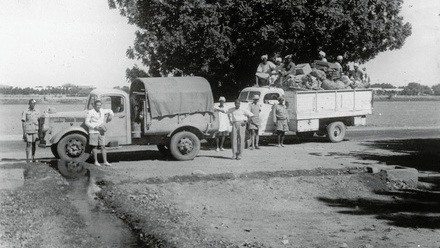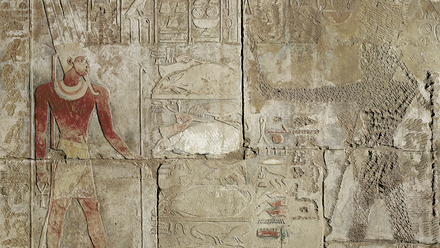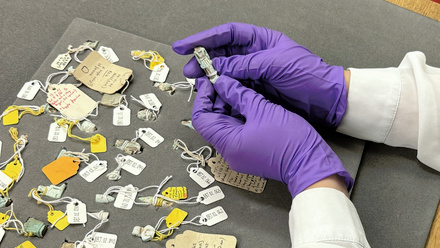Scanning Sesebi
Last week we were fortunate to welcome Elissa Day into the archive for her summer 2015 work experience placement. Her task for the week was to digitise the Society’s object records from our excavations at the site of Sesebi in northern Sudan between 1936 and 1938. As a budding young Egyptologist we were delighted that Elissa applied for her placement with us, and are equally as delighted with the results – which are now available online! Here Elissa reports on her week.
The mammoth task of scanning an entire collection of object cards was daunting at first, but I quickly got into a rhythm and was fascinated to learn how many separate items had been discovered during just two seasons (over 700!) and how carefully they had been illustrated and recorded, with the sketches of these objects still in perfect condition after almost eighty years. The range of object types and materials found was huge, from pottery fragments to amulets of the god Bes and various scarabs! Of course, being an establishment of Amenhotep IV (Akhenaten), Sesebi was bound to throw up some interesting cartouches – and a few of those can be seen on the object cards which are now available on the Society’s Flickr feed here.
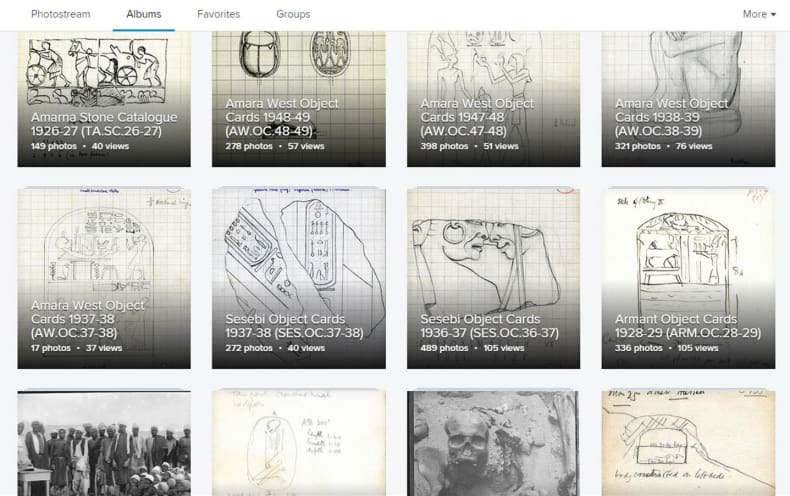
The Sesebi object card collection is now available to browse via our (ever-growing) Flickr feed
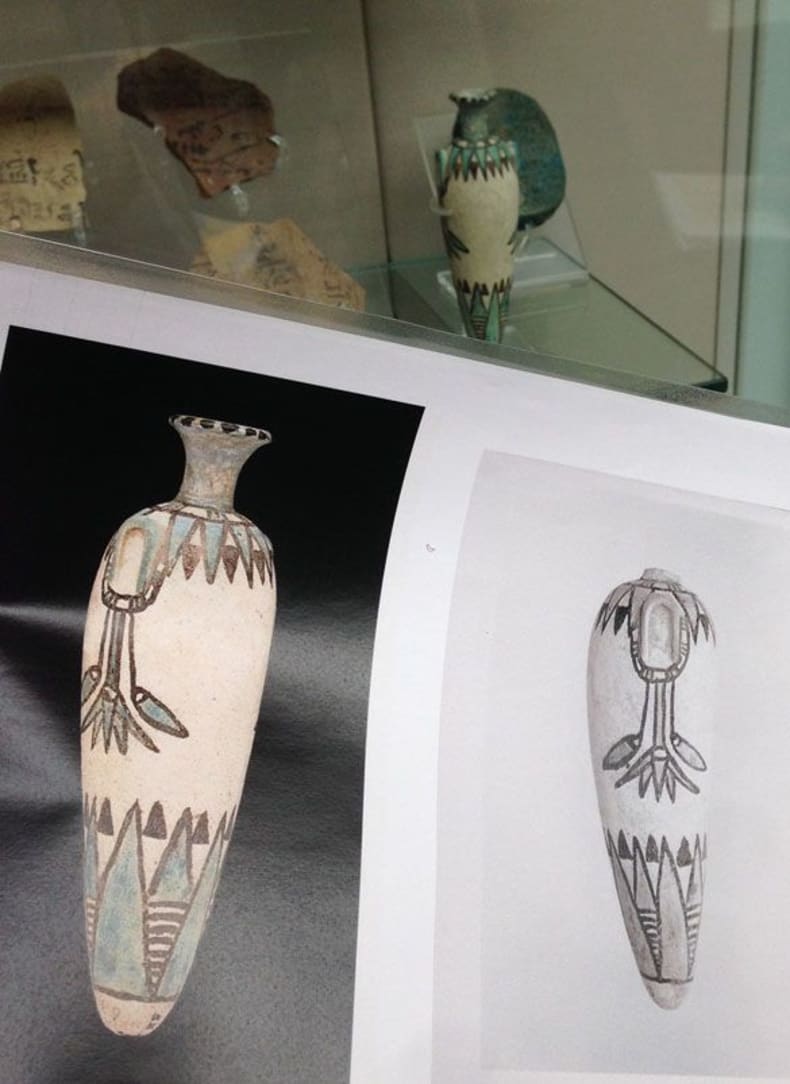
A particular highlight of the week for me was, after seeing the distribution of these items around the world, from Brooklyn to Stockholm, was heading over to the British Museum and being able to locate and view the real objects I had been scanning records of (left). I was later able to view the negatives of the objects and see how accurate the sketches on the object cards were compared to photographs and in some cases those objects on display in the museum.
The fact that I was able to access all of these resources made the process much more interesting, especially when I was able to view them in real life. I was fascinated to learn that due to the war, and Herbert W Fairman’s commitments in the UK (he was made the Brunner Professor of Egyptology at the University of Liverpool in 1947), the site was never fully published. However, further investigations of the site in more recent years by University of Cambridge under the direction of Dr Kate Spence continues to reveal more information about its history and significance during the early Amarna Period.
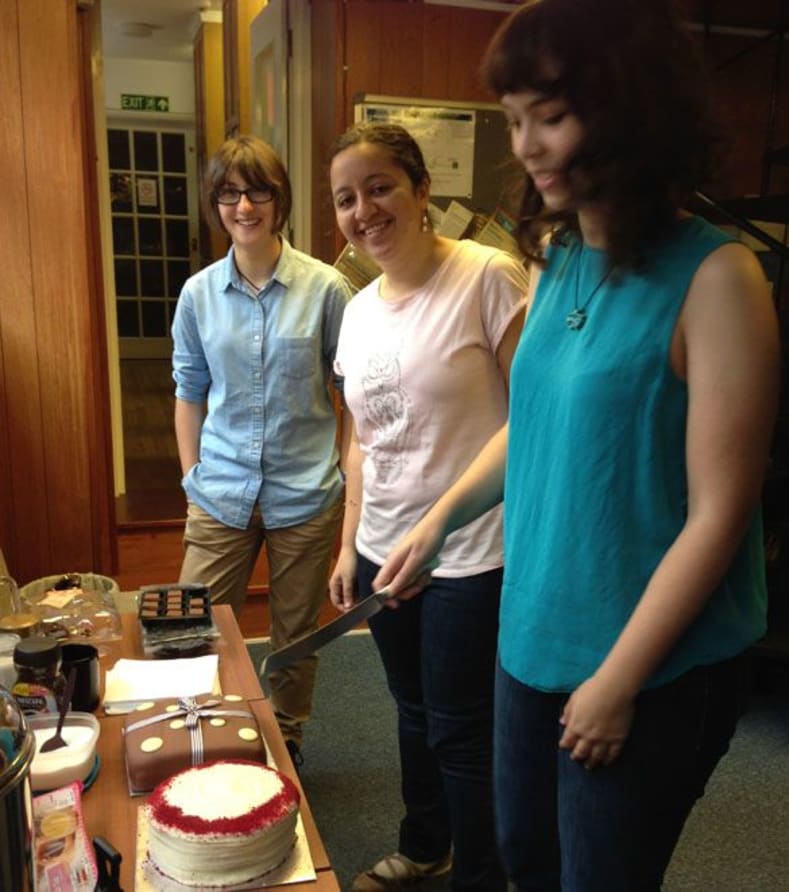
During Elissa's placement she also helped us celebrate Elina Rodriguez Millan's last day and completion of her internship with us during summer. Here, Elissa, Fatma and Elina cut up the leaving cake(s)
Since completing her work experience placement with us last week, Elissa has also opted to become a more regular volunteer around her college work – all with the aim of becoming an Egyptology student in the future!

